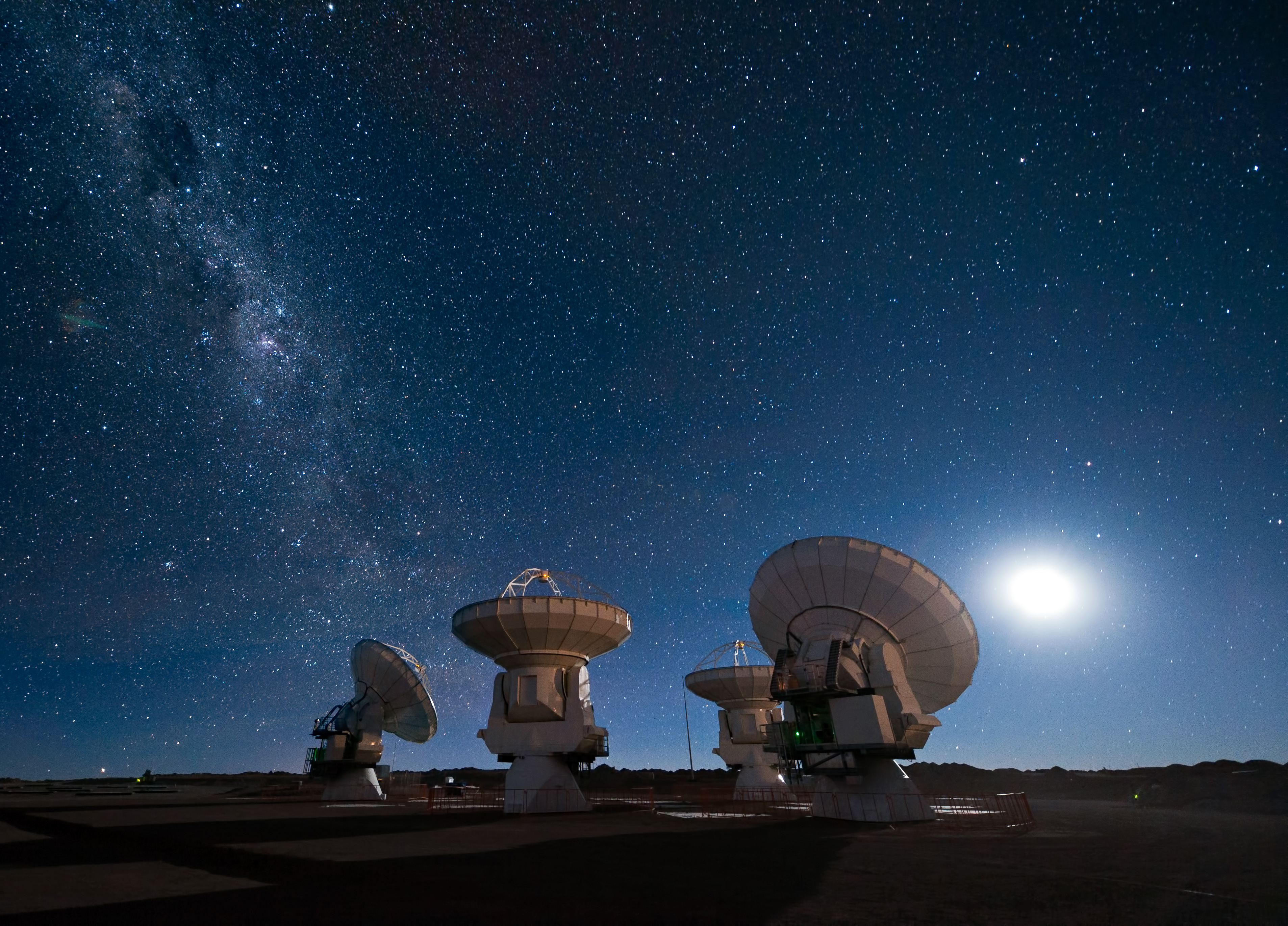|
Mario Schenberg (Gravitational Wave Detector)
The Mario Schenberg (Gravitational Wave Detector, or Brazilian Graviton Project or Graviton) is a spherical, resonant-mass, gravitational wave detector formerly run by the Physics Institute of the University of São Paulo, named after Mário Schenberg. Similar to the Dutch-run MiniGrail, the 1.15 ton, 65 cm diameter spherical test mass is suspended in a cryogenic vacuum enclosure, kept at 20 mK; and the sensors (transducers) for this detector/antenna are developed at the National Institute for Space Research (INPE), in Sao José dos Campos, Brazil. As of 2016, the antenna has not detected any gravitational waves, and development of the antenna continues. It has been decided that the antenna will be transferred from the University of São Paulo to INPE. See also * List of radio telescopes References {{coord missing, São Paulo (state) Gravitational-wave telescopes Astronomical observatories in Brazil ... [...More Info...] [...Related Items...] OR: [Wikipedia] [Google] [Baidu] |
Gravitational Wave Detector
A gravitational-wave detector (used in a gravitational-wave observatory) is any device designed to measure tiny distortions of spacetime called gravitational waves. Since the 1960s, various kinds of gravitational-wave detectors have been built and constantly improved. The present-day generation of laser interferometers has reached the necessary sensitivity to detect gravitational waves from astronomical sources, thus forming the primary tool of gravitational-wave astronomy. The first direct detection of gravitational waves made in 2015 by the Advanced LIGO observatories, a feat which was awarded the 2017 Nobel Prize in Physics. Challenge The direct detection of gravitational waves is complicated by the extraordinarily small effect the waves produce on a detector. The amplitude of a spherical wave falls off as the inverse of the distance from the source. Thus, even waves from extreme systems such as merging binary black holes die out to a very small amplitude by the time they ... [...More Info...] [...Related Items...] OR: [Wikipedia] [Google] [Baidu] |
University Of São Paulo
The University of São Paulo ( pt, Universidade de São Paulo, USP) is a public university in the Brazilian state of São Paulo. It is the largest Brazilian public university and the country's most prestigious educational institution, the best university in Ibero-America, and holds a high reputation among world universities, being ranked 100 worldwide in reputation by the Times Higher Education World University Rankings. The USP is involved in teaching, research and university extension in all areas of knowledge, offering a broad range of courses. The university was founded in 1934, regrouping already existing schools in the state of São Paulo, such as the Faculdade de Direito do Largo de São Francisco (Faculty of Law), the Escola Politécnica (Engineering School) and the Escola Superior de Agricultura Luiz de Queiroz (College of Agriculture). The university's foundation is marked by the creation in 1934 of the Faculdade de Filosofia, Ciências e Letras (Faculty of Philo ... [...More Info...] [...Related Items...] OR: [Wikipedia] [Google] [Baidu] |
Mário Schenberg
Mário Schenberg (var. ''Mário Schönberg'', ''Mario Schonberg'', ''Mário Schoenberg''; July 2, 1914 – November 10, 1990) was a Brazilian electrical engineer, physicist, art critic and writer. Early life Schenberg was born in Recife, Brazil. His parents were Russian-Jews of German origin. From early on he showed remarkable ability for mathematics, enchanting himself with geometry, which had a strong influence on his works. Schenberg took the primary and secondary courses in Recife. Because of his family's financial limitations, he was not able to study in Europe. He then entered the Faculty of Engineering of Recife in 1931. Scientific work The Urca process Widely regarded as one of Brazil's most important theoretical physicists, Schenberg is best remembered for his contributions to astrophysics, particularly the theory of nuclear processes in the formation of supernova stars. He provided the inspiration for the name of the so-called '' Urca process'', a cycle of nuclea ... [...More Info...] [...Related Items...] OR: [Wikipedia] [Google] [Baidu] |
MiniGrail
MiniGRAIL was a type of Resonant Mass Antenna, which is a massive sphere that used to detect gravitational waves. The MiniGRAIL was the first such detector to use a spherical design. It is located at Leiden University in the Netherlands. The project was managed by the Kamerlingh Onnes Laboratory. A team from the Department of Theoretical Physics of the University of Geneva, Switzerland, was also heavily involved. The project was terminated in 2005. Gravitational waves are a type of radiation that is emitted by objects that have mass and are undergoing acceleration. The strongest sources of gravitational waves are suspected to be compact objects such as neutron stars and black holes. This detector may be able to detect certain types of instabilities in rotating single and binary neutron stars, and the merger of small black holes or neutron stars. Design A spherical design has the benefit of being able to detect gravitational waves arriving from any direction, and it is sensitive to ... [...More Info...] [...Related Items...] OR: [Wikipedia] [Google] [Baidu] |
List Of Radio Telescopes
This is a list of radio telescopes – over one hundred – that are or have been used for radio astronomy. The list includes both single dishes and interferometric arrays. The list is sorted by region, then by name; unnamed telescopes are in reverse size order at the end of the list. The first radio telescope was invented in 1932, when Karl Jansky at Bell Telephone Laboratories observed radiation coming from the Milky Way. Africa Antarctica Asia Australia Europe North America South America Arctic Ocean Atlantic Ocean Indian Ocean Pacific Ocean Space-based Under construction or planned construction Proposed telescopes Gallery of big dishes File:FastTelescope*8sep2015.jpg, alt=Five hundred meter Aperture Spherical Telescope under construction, The 500 meter Five hundred meter Aperture Spherical Telescope (FAST), under construction, China (2016) File:GBT.png, alt=Green Bank Telescope, The 100 meter Green Bank Telescope ... [...More Info...] [...Related Items...] OR: [Wikipedia] [Google] [Baidu] |
